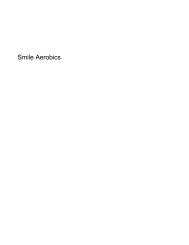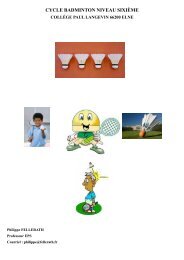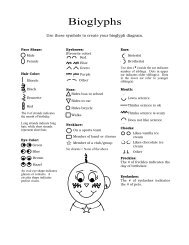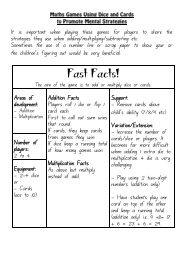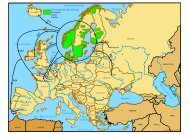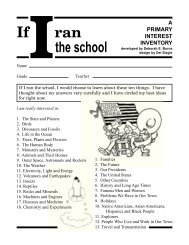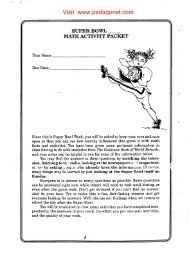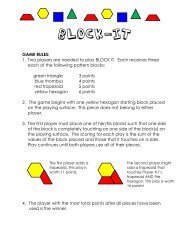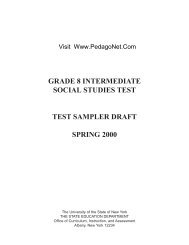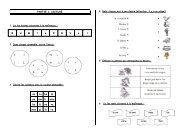You also want an ePaper? Increase the reach of your titles
YUMPU automatically turns print PDFs into web optimized ePapers that Google loves.
Butterfly vs. Moth: Antennae ActivityLesson FiveAges PrimaryObjective: Students review the differences beween moth <strong>and</strong> butterfly anatomyMaterials:Picture of butterfly <strong>and</strong> moth antennae (Figure 5)Aluminium foilDifferent colors of pipe cleaners ScissorsClear tapeDrawing paperMarkers <strong>and</strong>/or crayonsSuggested Approach:Ask your class if they remember where the antennae are located on the butterfly or moth.Tell them that antennae are located on the head. Ask the students if they remember thedifference between butterfly <strong>and</strong> moth antennae. Hold up the picture of butterfly <strong>and</strong>moth antennae (Figure 5). Butterfly antennae are long <strong>and</strong> thin with a little knob at theend. That is why they are called club-shaped antennae. Moth antennae are usually thick<strong>and</strong> feathery. Smell is especially important to moths because they fly at night <strong>and</strong> needsome extra help to find food <strong>and</strong> mates. The extra hairs on moth antennae provide a greatersurface area on which to pick up scents.Tell the class that they are going to make their own antennae.Making the Antennae:1. Pass out drawing paper, marker <strong>and</strong>/or crayons, scissors, pipe cleaners, tape <strong>and</strong> twolong (3”x12”) pieces of aluminum foil to each child.2. Roll <strong>and</strong> twist the long pieces of aluminum into a headb<strong>and</strong>.3. Let the children decide whether they want to make butterfly or moth antennae.For the Butterfly4a. Cut a teardrop shape out of the drawing paper. This will be the knob on the endof the antennae.4b. Color both sides of the paper.4c. Tape one end of a pipe cleaner to the pointed end of the tear-drop cutout.For the Moth4d. Have the children cut two peices of paper in the shape of an eye that are just a bitlonger than half the length of the pipe cleaner.4e. Have them color both sides of the paper.4f. Tape a pipe cleaner lenthwise down the middle of the paper.For Both5. Wrap the bare end of the pipe cleaner around the aluminum headb<strong>and</strong> <strong>and</strong> wear!Florida Museum of Natural History http://www.flmnh.ufl.edu 20



